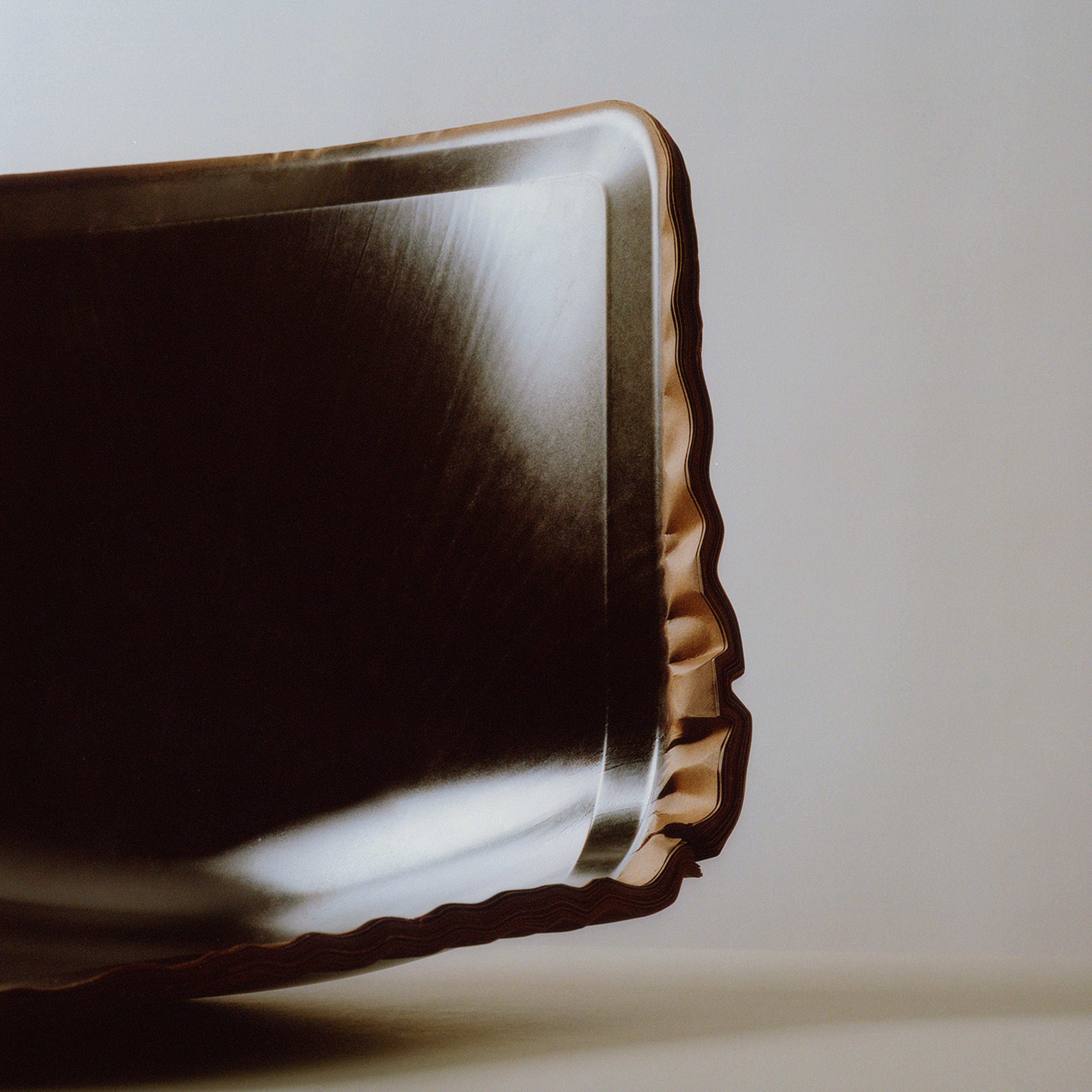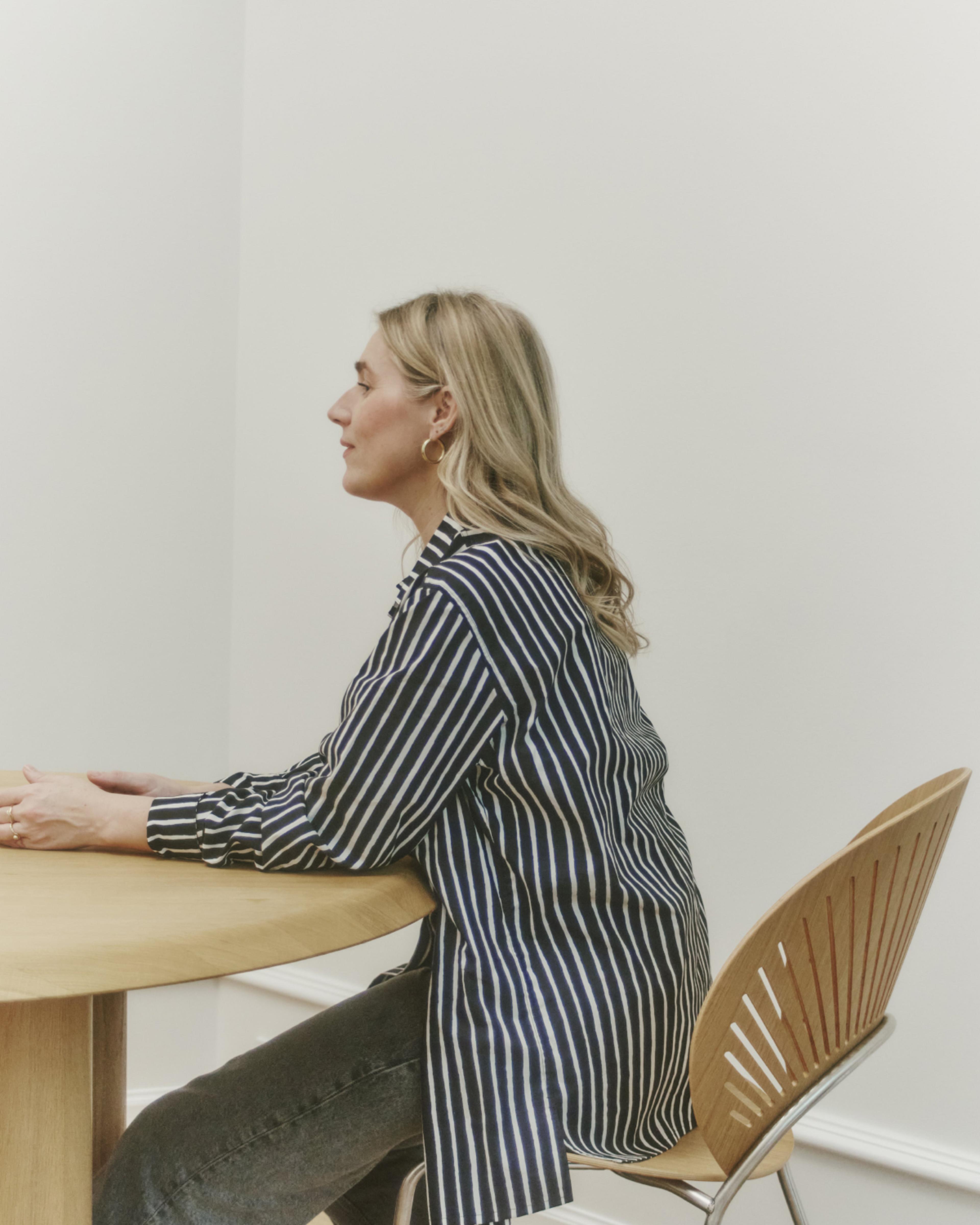A family home full of design and experimentation
A conversation with Dennie Ditzel, daughter of Nanna Ditzel and CEO of Nanna Ditzel Design Studio.
As the firstborn of Nanna Ditzel’s three daughters, Dennie grew up in a creative home where both her mother and father let inspiration flow and experimentation prevail. A home with big ideas and a new way of looking at life. From 1995–2005, Nanna and Dennie worked closely together at the studio, where Dennie is still responsible for carrying on the design legacy.


“ In 1966, my mother converted our living room into a stepped arrangement where you were literally forced to lie down instead of sitting up. One of my sisters loved the different style, while I questioned why it should stand out from the other homes I knew. I was probably a little boring – ‘bourgeois’ – my mother said. ”
Dennie Ditzel, daugther of Nanna Ditzel and CEO of Nanna Ditzel Design Studio
FREDERICIA What was unique about Nanna Ditzel?
DENNIE Nanna was incredibly multi-faceted; her strength was that she did not allow herself to be limited. She was highly experimental with furniture, textiles, jewellery and crafts, using new materials and new approaches to developing things. My mother was good at reading up on things and dedicating her time to improving her skills. When she became interested in textiles as a young furniture designer, she borrowed books from the library to learn about colour theory and weaving techniques, and frequently visited weaving mills. Around the same time, she became interested in designing jewellery, so she immersed herself in that and spent many hours in goldsmiths’ workshops. She took an interest in everything – even what was not necessarily comme il faut to work with, such as jewellery, which – at a time when functionalism was in vogue – was considered unnecessary decoration without a function, which perhaps also piqued her interest – the somewhat forbidden can be a source of fascination.
Nanna was around when there weren’t many women in the field. Some may have graduated but chose to look after children and leave pursuing a career to their husbands. Fortunately, Nanna had very modern parents who allowed her to pursue her dream of becoming a furniture designer. My parents, who met while studying at the School of Arts and Crafts, quickly found a personal and professional community. Soon after graduating, they married and set up their own design studio. Being a couple with a common interest and a common goal was undoubtedly significant to Nanna as a woman in a world where a women’s place was still somewhat considered to be in the home.


Nanna Ditzel's living room, Bagsværd 1967. From left to right: Esben Thyrring, Vita Ditzel, and Lulu Ditzel (reclining)
F Where did the inspiration come from?
D My mother and I had many conversations about inspiration and where it came from; these conversations started when I was young, and I just started to question why her pieces looked the way they did. I realised that they didn’t look like Poul Kjærholm’s angular furniture and others that were typical of the time. Nanna’s pieces were so incredibly recognisable. She was particularly inspired by nature and architecture. The animals at the zoo. The conch shells and other sea shells on the beach. She kind of absorbed it all and compressed it, and used what she thought was beautiful. An aesthetic analysis. She told me she would probably have become a sculptor if she hadn’t become a furniture architec and designer.
F Ditzel was known for experimenting and challenging conventions. Was this something you experienced at home?
D Yes, we were subject to that. In 1966, my mother converted our living room into a stepped arrangement where you were literally forced to lie down instead of sitting up. One of my sisters loved the different style, while I questioned why it should stand out from the other homes I knew. I was probably a little boring – ‘bourgeois’ – my mother said. For me, both home and mother should look like everyone else’s, whereas my sisters thought it was cool to have a mother who was always very smartly dressed, and they liked to see their home portrayed in magazines and weeklies. That may be a bit oversimplified, but yes, we lived with the experimentation and the challenges.
F What helped secure Ditzel’s position in Danish design?
D I think it was very much the drive that Nanna had; she made things happen and was able to push them over the edge. She dared to do what she wanted to do and what she devised. She wanted to eliminate formality and dared to challenge convention.
F What is your favourite object created by Nanna Ditzel?
D That would be the Trisse table. It is both incredibly versatile and recognisable, and unique. It was initially designed as children’s furniture in 1962 when Nanna was asked to design some furniture for a kindergarten. Over the years, Nanna always had them in countless variations in her home, just as I have them in my home today. Besides the Trisse table, I like the Trinidad Chair immensely, with its slotted back and constantly varying patterns. It’s a signature piece in the room and very comfortable to sit on.
1 of 2
Keep exploring
Dive into our universe of stories about Nanna Ditzel's life, her designs and the people who knew her.
1 of 4



















